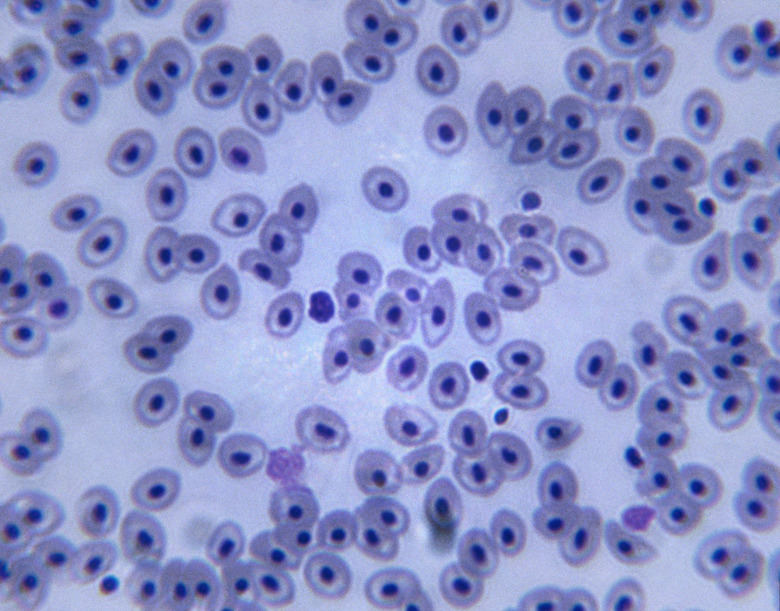What Is Meiotic Interphase?
To grow, repair and reproduce, cells undergo one of two cell division processes: mitosis or meiosis.
Mitosis produces two daughter cells that have the same number of chromosomes as the mother cell. With meiosis, four daughter cells with half the number of chromosomes as the mother cell are produced. Although the process of mitosis and meiosis differs, what occurs during the interphase stage of meiosis is the same as that of mitosis.
In this post, we're going over what the meiosis definition is, what meiosis interphase is specifically and where it is during the steps of meiosis.
Meiosis Definition
Meiosis Definition
The general meiosis definition is cell division that results in four haploid cells (half the "normal" amount of DNA) from one mother cell. It's used for the creation of gametes like eggs, sperm and spores in some types of plants.
The general steps of meiosis are: interphase (separated into G1, S, and G2 phases), prophase 1, metaphase 1, anaphase 1, telophase 1, prophase 2, metaphase 2, anaphase 2 and telophase 2.
In this post, we're going to focus on meiosis interphase.
G1 Phase: Doing Their Job
G1 Phase: Doing Their Job
During the first phase of meiosis interphase — known as G1 — cells grow and perform many of their required cellular functions. These functions can include producing proteins and transmitting signals to or receiving signals from other cells.
During this phase, the chromosomes are housed within a nuclear membrane.
S Phase: Doubling Time
S Phase: Doubling Time
Interphase is a time for the cell to prepare for meiosis and part of this preparation involves doubling the number of chromosomes the cell contains. This part of interphase is known as S phase, with the S standing for synthesis. Each chromosome ends up with an identical twin called sister chromatids.
The twins are joined together in a dense area called a centromere. These joined twin chromosomes are called sister chromatids. During the S phase, the nuclear envelope is still in place and the chromatids are not distinct. In the cells of plants, a spindle that will eventually pull the chromatids apart develops during the S phase.
G2 Phase: Preparing for Action
G2 Phase: Preparing for Action
Most of the final phase of meiotic interphase is much like the G1 phase and is known simply as the G2 phase. The cell continues to grow and perform its cellular duties with the double chromosomes tucked inside a nuclear membrane. At the final moments of the G2 phase in animal cells, bundles of microtubules called centriole pairs duplicate within the centrosome and become well-defined.
These two centriole pairs will later produce the spindle of fibers that will pull the sister chromatids apart. During the other phases of interphase, the centrosome has only one centriole pair and appears as a poorly defined dark spot near the nucleus.
Completing the First and Second Division
Completing the First and Second Division
Unlike mitosis where only one division occurs, cells undergoing meiosis experience two cell divisions. The first division is similar to mitosis and results in two daughter cells with the same number of chromosomes as the mother cell. These two daughter cells then experience a second division to make four cells.
Because there is no second interphase between the two divisions of meiosis, the chromosomes within the two daughter cells do not have time to double again before this second split. The second division halves the chromosome number in the two daughter cells, producing four cells with only half the number of chromosomes as the original mother cell.
Thus, when two gametes join together, they form a fertilized zygote that has a diploid number of chromosomes and begins developing into a new organism.
Cite This Article
MLA
Painter, Tammie. "What Is Meiotic Interphase?" sciencing.com, https://www.sciencing.com/meiotic-interphase-14548/. 23 May 2019.
APA
Painter, Tammie. (2019, May 23). What Is Meiotic Interphase?. sciencing.com. Retrieved from https://www.sciencing.com/meiotic-interphase-14548/
Chicago
Painter, Tammie. What Is Meiotic Interphase? last modified March 24, 2022. https://www.sciencing.com/meiotic-interphase-14548/
